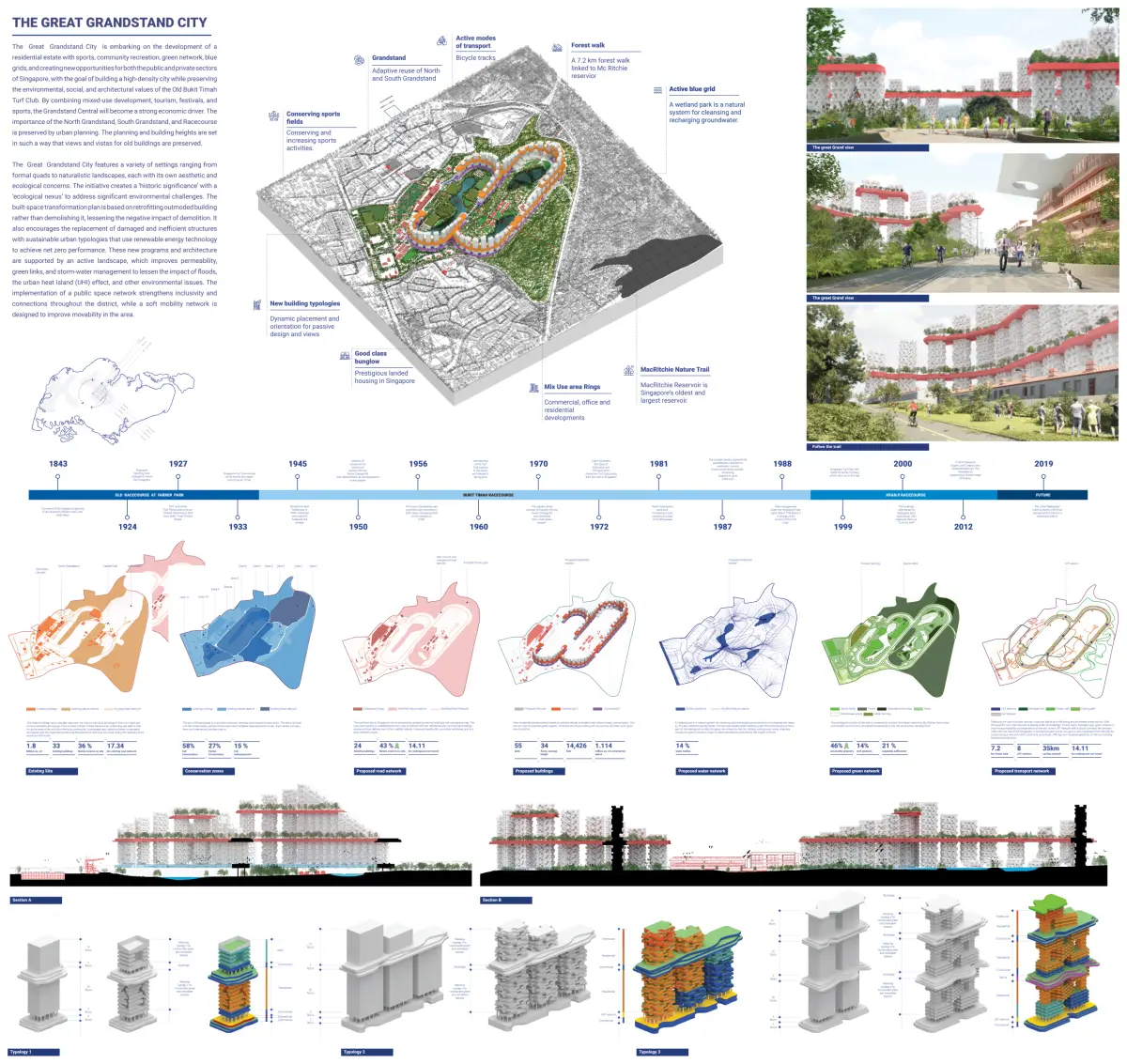
The Great Grandstand
BY Garg Atul
SUPERVISED BY Assoc. Prof. Johannes Widodo (Dr.)
STUDIO THEME ASIAN MODERN HERITAGE IN THE CONTEXT OF CHANGE: CONSERVATION FOR SUSTAINABILITY
Abstract
The Great Grandstand City is embarking on the development of a residential estate with sports, community recreation, green network, blue grids, and creating new opportunities for both the public and private sectors of Singapore, with the goal of building a high-density city while preserving the environmental, social, and architectural values of the Old Bukit Timah Turf Club. By combining mixed-use development, tourism, festivals, and sports, the Grandstand Central will become a strong economic driver. The importance of the North Grandstand, South Grandstand, and Racecourse is preserved by urban planning. The planning and building heights are set in such a way that views and vistas for old buildings are preserved.
The Great Grandstand City features a variety of settings ranging from formal quads to naturalistic landscapes, each with its own aesthetic and ecological concerns. The initiative creates a ‘historic significance’ with a ‘ecological nexus’ to address significant environmental challenges. The built-space transformation plan is based on retrofitting outmoded building rather than demolishing it, lessening the negative impact of demolition. It also encourages the replacement of damaged and inefficient structures with sustainable urban typologies that use renewable energy technology to achieve net zero performance. These new programs and architecture are supported by an active landscape, which improves permeability, green links, and storm-water management to lessen the impact of floods, the urban heat island (UHI) effect, and other environmental issues. The implementation of a public space network strengthens inclusivity and connections throughout the district, while a soft mobility network is designed to improve movability in the area.
Supervisor Comments
The conceptual thesis investigates the implementation of an evaluation methodology for determining the relevance of major contemporary heritage structures and sites for conservation and redevelopment. The proposal examines the economic feasibility model at the site planning level by observing the topography, original heritage structures, and existing morphological patterns on this former racetrack. The plan tries to strike a balance between nature preservation and urban redevelopment, taking into account the rise in population density as a consequence of Singapore's population growth figures, which indicate significant demand for more housing stocks and new urban facilities.
- Assoc. Prof. Johannes Widodo (Dr.)
Garg Atul
Garg Atul